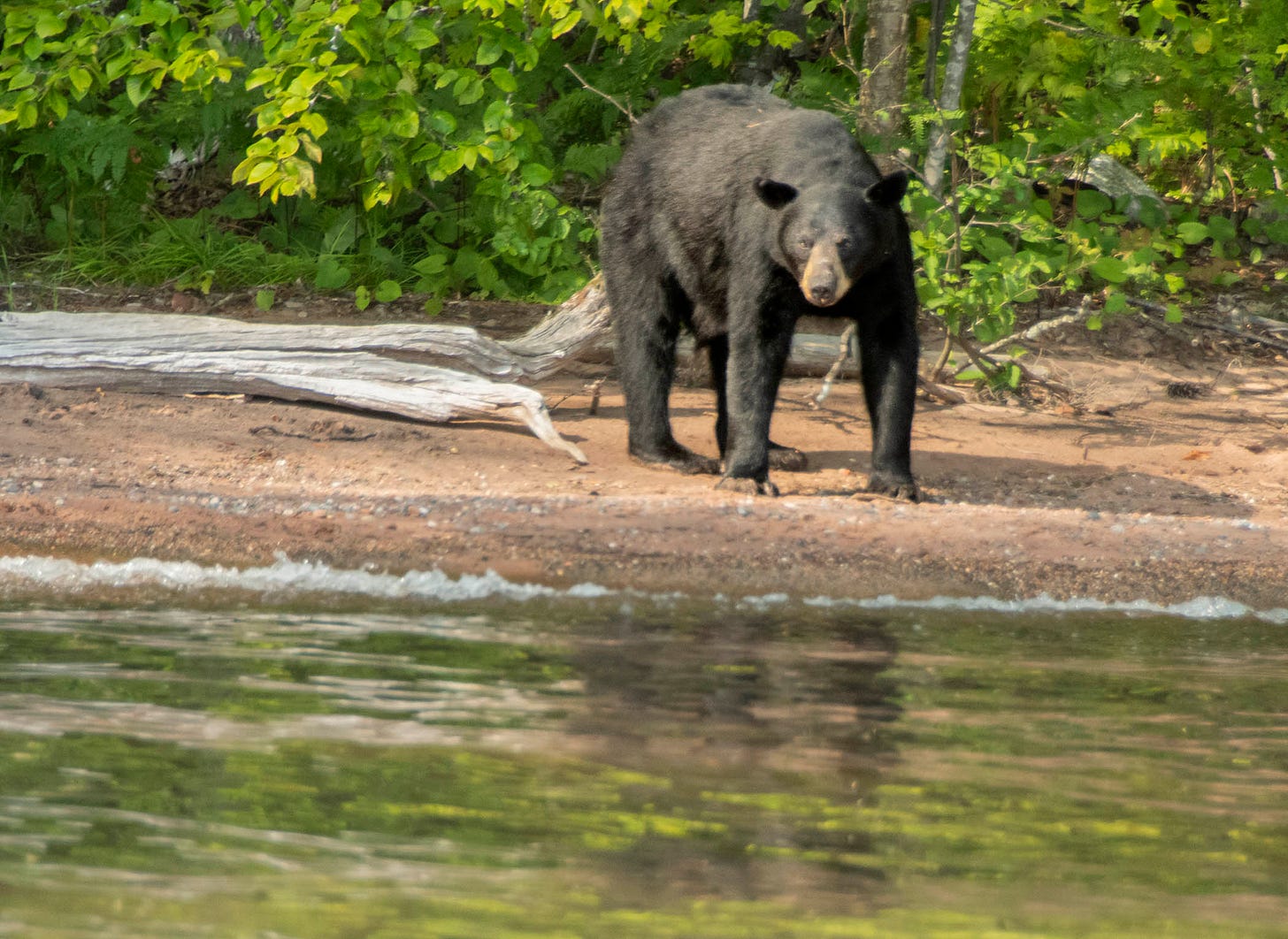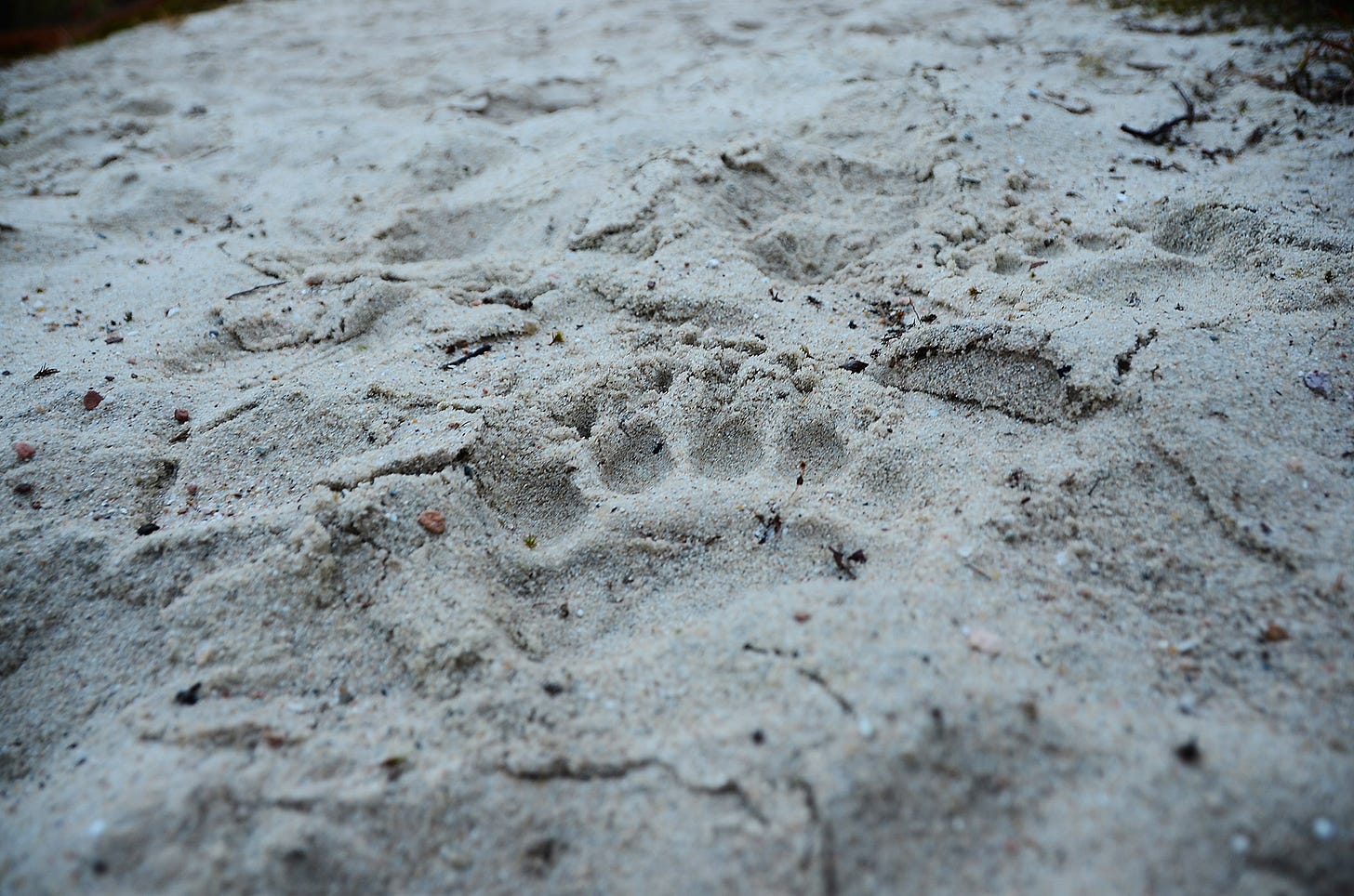Off Kilter (vol. 4)
A continuing series of wacky and wonderful island tales tipped slightly askew. In this installment: weird wildlife stories.
Many of us come to the Apostle Islands with dreams of encountering wildlife — watching ribbons of migrating birds knit together the colors of a sunset above the Outer Island sandspit where researchers once tallied 104,000 birds representing 107 species, as many as 28,000 birds an hour during one exceptional migration. We dream of walking in bear tracks stitching an early morning beach, or following in a trail of the heart-shaped tracks of deer. Our nights are often serenaded in loon calls or the sharp yipping of coyotes, and wildlife stories around the campfire.
There are plenty of wildlife stories to be told around island campfires. The Apostle Islands are islands of life - six species of salamaders, nearly a dozen species of frogs, some 300 species of birds, black bears, whitetailed deer, marten, otters, eagles, and at least one very, very tired bird. Just ask kayaker Owen Murphy.
Birds on the Brain
Like many visitors, Owen Murphy and his paddling partner had come to the Apostle Islands for adventure, beauty, and hoping to get a close encounter with wildlife. He could never have imagined just how close that encounter would be. Here, in his own words, is his story as told to interviewer Neil Howk on the website of Friends of the Apostle Islands:
“We were paddling last summer and it was a perfectly calm day, so we got out to Devils Island and spent the morning going through the sea caves. Because the conditions were so good we decided we were going to do the large crossing from Devils Island to Sand Island, which is probably 8 or 9 miles and about 5 miles offshore. About halfway through that trip as I was paddling, a hawk was flying right at my head looking me straight in the eye and I didn’t know what was going to happen. It went right over my head.”
“It turns out that what it was doing was it got too far out into Lake Superior and was really tired so it actually flapped its wings and very carefully landed on the top of my head!
(photo by Owen Murphy)
I didn’t feel it at first and my buddy said, ‘there’s a hawk on your head!’ And I’m like, ‘what?’ And then I could start feeling its talons through my hat. And basically what happened was that the hawk had gotten so far out and it was tired and it needed to take a break and find a place to land. Apparently, my head was the place that it chose to do that.”
“So it stayed on my head for a little while, probably like 10 or 15 minutes. I shot some pictures. Then it hopped off onto the back of my kayak, rode for a little bit longer, then flew off. It was a pretty amazing, one in a million experience.”
(photograph by Owen Murphy)
I Shall Return: A bear story
“One in a million” might also be an apt description of another close encounter with island wildlife. This one occured on the night of July 31, 1988. On that evening, there were a trio of sailboats rocking softly at the Presque Isle dock — the Atlantis, the Arrowhead, and the Sugar ‘n Spice. None aboard those sleeping vessels had any idea what was about to happen.
Stockton Island has long been famous for its bears — one study estimated as many as one bear per 2.1 square miles giving Stockton Island one of the highest densitites of black bears anywhere in North America. This is a place where the tracks of humans and bears have long mingled in the island sands. While there has never been an incident of a bear injuring a human on Stockton Island, what would happen that July evening in 1988 would be too close for comfort, and would create a legend.
Sometime around midnight, drawn perhaps by the lingering scent of grilled food hovering around those sailboats, a black bear padded down the dock, its nose in the air. This particular bear was already well known to rangers. It has been seen tearing into garbage cans, licking a frying pan errantly left lying around a campsite, even approaching a circle of campers at a ranger talk.
On this night, it went one step further. This time, the bear not only investigated the dock but brazenly boarded each of the sailboats in turn, searching for food, ripping into coolers, tearing a hatch cover off the Atlantis, startling the sleeping boat owners, until being driven off by a barking dog and presumably sailors in their pajamas.
On August 16th, park rangers managed to capture the bear in a culvert trap and relocate the animal to a spot deep in the heart of the Chequamegon National Forest 20 miles south of Bayfield. That should have been the end of the story: it wasn’t.
Using the signal from a radio transmitter, researchers tracked movements of the bear working its way back towards Cornupcopia, then to the northeastern tip of the peninsula. For a time the signal was lost but on September 18th, it was picked up again somewhere familiar. Somehow, the bear had found its way through the maze of islands straight back to Stockton earning the nickname, “MacArthur” for the famous “I shall return!” quip of World War II General Douglas MacArthur.
Over the next summer, MacArthur was spotted several more times - once swimming to Oak Island - but seemingly staying out of trouble. Finally, in the fall of 1989, the radio transmitter stopped working, the collar fell off, and MacArthur faded into island history. But the legend lives on. There are those who swear it is still out there in the gathering mists or leaving a line of tracks on a quiet stretch of island beach. But most often now MacArthur is seen only in the shadows of campfire stories told on island nights to campers with eyes wide open and ears listening carefully for nearly silent footfalls in the forest behind them.
— Jeff Rennicke (photography by the author unless otherwise noted).
What is your favorite wildlife encounter among the islands? Use the button below to let me know.
To read other installments of the “Off Kilter” series, click below:











